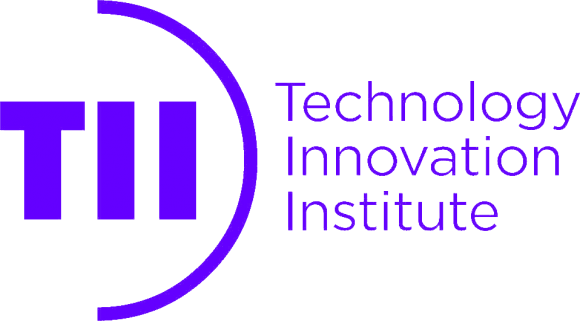Keynotes Schedule
Monday, 29 May
9:00-11:00
Keynote 8: Wen Tong, CTO, Wireless Network, Huawei Technologies Co., Ltd.
Keynote 5: Giampaolo Tardioli, Vice President of Communication Solution Group (CSG), Keysight Inc.
Tuesday, 30 May
9:00-11:00
Keynote 1: Urbashi Mitra, University of Southern California, USA
Keynote 2: Nicola Blefari-Melazzi, University of Roma Tor Vergata, Italy
Keynote 3: Geng Wu, Intel Fellow and Head of Next Generation and Standards, Intel Corporation, USA
Wednesday, 31 May
9:00-11:00
Keynote 4: Mérouane Debbah, Technology Innovation Institute, UAE
Keynote 6: Xinhui Wang, Vice President, ZTE Corporation, China
Keynote 7: Lorenzo Casaccia, Qualcomm, Spain
13:00-13:30
Keynote 9: Radia Perlman, 2023 IEEE Eric E. Sumner Award Recipient
Keynote 1: Urbashi Mitra, University of Southern California, USA
Date: Tuesday, 30 May
Time: 9:00-11:00
Location: Auditorium
Title: Digital Cousins: Ensemble Learning for Large & Heterogeneous Networks
Abstract: The evolution to 6G promises communication-and-compute networks that are larger in scale and with significantly heterogeneous edge devices. These modern networks challenge our ability to design and optimize efficiently. While cognitive networks promise to introduce agility and intelligence, there is a need to significantly scale up such approaches in an internet-of-everything world. We present modeling strategies that effectively capture the dynamics and heterogeneity of these modern networks – however, the models come at the price of complexity. To this end, we propose a multi-pronged approach to network design and optimization. We review strategies exploiting graph signal processing for network optimization including new representations for network behavior. We show that the new representations allow for efficient graph reduction and enable low complexity optimization of network control policies. An exciting consequence is that the graph representations allow for the efficient creation of related synthetic networks, or digital cousins, that accurately capture network behavior without the need for excessive trajectory sampling of the actual network. A novel on-line/off-line Q-learning methodology is proposed enabling ensemble learning across the digital cousins. The proposed strategy offers significantly improved convergence rates and performance versus current state-of-the-art learning methods including those based on neural networks. Theoretical guarantees can be provided, and the proposed methods offer strong performance gains across a variety of networks.
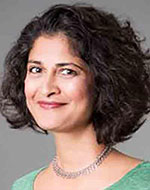 Bio: Urbashi Mitra received her B.S. and M.S. degrees from the University of California, Berkeley and her Ph.D. from Princeton University. She is currently a Dean’s Professor of Electrical Engineering at the University of Southern California and previously at the Ohio State University and Bellcore. Specific to IEEE ComSoc, she is the inaugural editor-in-chief for IEEE Transactions on Molecular, Biological and Multi-Scale Communications, a Distinguished Lecturer for the IEEE Communications Society, 2017 Vice Chair of the Communication Theory Technical Committee, 2017 Chair of the Transactions on Wireless Communications Steering Committee, a former associate editor of IEEE Transactions on Communications, and a Technical Co-Chair for the ICC 2003 Communication Theory Symposium. She received the 2016 ComSoc Women in Communications Engineering Mentoring Award. She is an IEEE Fellow. Other awards include: being a U.S. Fulbright Scholar, a U.S. National Academy of Engineering Lillian Gilbreth Lectureship, a GLOBECOM Signal Processing for Communications Symposium Best Paper Award, Texas Instruments Visiting Professor, the Okawa Foundation Award, the OSU College of Engineering Research Award, the OSU College of Engineering Teaching Award, and a NSF CAREER Award.
Bio: Urbashi Mitra received her B.S. and M.S. degrees from the University of California, Berkeley and her Ph.D. from Princeton University. She is currently a Dean’s Professor of Electrical Engineering at the University of Southern California and previously at the Ohio State University and Bellcore. Specific to IEEE ComSoc, she is the inaugural editor-in-chief for IEEE Transactions on Molecular, Biological and Multi-Scale Communications, a Distinguished Lecturer for the IEEE Communications Society, 2017 Vice Chair of the Communication Theory Technical Committee, 2017 Chair of the Transactions on Wireless Communications Steering Committee, a former associate editor of IEEE Transactions on Communications, and a Technical Co-Chair for the ICC 2003 Communication Theory Symposium. She received the 2016 ComSoc Women in Communications Engineering Mentoring Award. She is an IEEE Fellow. Other awards include: being a U.S. Fulbright Scholar, a U.S. National Academy of Engineering Lillian Gilbreth Lectureship, a GLOBECOM Signal Processing for Communications Symposium Best Paper Award, Texas Instruments Visiting Professor, the Okawa Foundation Award, the OSU College of Engineering Research Award, the OSU College of Engineering Teaching Award, and a NSF CAREER Award.
Keynote 2: Nicola Blefari-Melazzi, University of Roma Tor Vergata, Italy
Date: Tuesday, 30 May
Time: 9:00-11:00
Location: Auditorium
Title: The changing role of stakeholders in the evolving Internet (or the end of the Internet as we knew it)
Abstract: The Internet as a whole, including access technologies and cellular networks, has undergone a significant evolution since its original setup. However, key TCP/IP functionalities, such as multicast and service differentiation, have not been widely deployed and core protocols have not always kept up with advancements. Meanwhile, the number and diversity of online applications and content have skyrocketed, not to mention the amount of traffic they generate, while network operators encountered difficulties in diversifying their portfolio of services. In addition, business models have changed a lot and new ones have emerged.
The combination of these factors has resulted in two momentous outcomes: i) the network is diverse and patchy, with performance greatly varying across different regions, whereas important functionalities are provided unevenly and/or as network overlays; ii) new players have entered the market, narrowing the role of traditional network providers: hyperscalers, providing applications and content as well as cloud services and connectivity; CDN providers; cybersecurity providers; IXPs and intermediaries, but also new connectivity providers, such as utilities and municipalities.
Despite impressive improvements in network protocols and performance, the question remains whether the architecture and current service offerings of the public Internet are at par with the requests of users, and especially of innovative businesses. This talk will discuss some options for the evolution of the network. Shall we accept the current situation and confide in good/over dimensioning and market dynamics? Or should we consider innovative network architectures? Should we update net neutrality principles and introduce so called specialised services on top of basic Internet access services?
In this context, we will analyse the role of stakeholders in the changing landscape and identify open challenges.
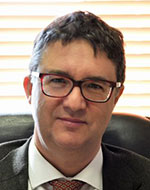 Bio: Nicola Blefari-Melazzi is a full Professor of Telecommunications at the University of Roma Tor Vergata, where he served as Chair of the PhD program in Telecommunications Engineering, Chair of the undergraduate and graduate programs in Telecommunications Engineering and Chair of the Department of Electronic Engineering. From January 2017 to January 2023 he has been the Director of CNIT (National Inter-University Consortium for Telecommunications), a non-profit Consortium made up of 41 Italian Universities. More than 1,300 people, belonging to the participating universities, collaborate with CNIT, while the number of own-employees is more than 100. Since January 2023 he is the president of CNIT.
Bio: Nicola Blefari-Melazzi is a full Professor of Telecommunications at the University of Roma Tor Vergata, where he served as Chair of the PhD program in Telecommunications Engineering, Chair of the undergraduate and graduate programs in Telecommunications Engineering and Chair of the Department of Electronic Engineering. From January 2017 to January 2023 he has been the Director of CNIT (National Inter-University Consortium for Telecommunications), a non-profit Consortium made up of 41 Italian Universities. More than 1,300 people, belonging to the participating universities, collaborate with CNIT, while the number of own-employees is more than 100. Since January 2023 he is the president of CNIT.
His research projects have been funded by Italian Ministries, by the Italian National Research Council, by major companies (e.g., Ericsson, Telecom Italia), by the ESA and by the EU. He has participated in 33 EU projects, playing the role of project coordinator and PI for seven of them. He has been a member of the board of the 5G Infrastructure Association, the private side of the 5G Public Private Partnership, a joint initiative between the European ICT sector and the European Commission, which funded with a 1.4 Billion Euro budget the R&D on 5G. He is still a member of the 5G Infrastructure Association, now re-named 6G Infrastructure Association, that recently founded the Smart Networks and Services Joint Undertaking together with the European Commission, which is funding with 900 MEUR the research and development for 6G and related technologies. He has been appointed by the Ministry of University and Research as Italian representative in the Member States’ Representatives Group of such Smart Networks and Services Joint Undertaking. Since September 2022, he is the President of the RESTART Foundation, established primarily for the implementation, coordination and management of the 116 M€ MUR-funded research program “Telecommunications of the Future”.
He evaluated many research proposals and projects in EU programs and served as TPC member, TPC Chair, General Chair and Steering Committee Chair for IEEE Conferences and guest editor for IEEE Journals. He is an area editor for Elsevier’s Computer Networks. He is author/co-author of about 260 papers. His research interests lie in the performance evaluation, design and control of telecommunications networks.
Keynote 3: Geng Wu, Intel Fellow and Head of Next Generation and Standards, Intel Corporation, USA
Date: Tuesday, 30 May
Time: 9:00-11:00
Location: Auditorium
Title: 6G Cloud-Native System – Vision, Architecture Framework and Enabling Technologies
Abstract: Every generation of wireless technology needs to bring new system capabilities to enable future-generation applications and services. The sixth-generation mobile system (6G) is no exception. This talk will provide an overview of the technology transformation from the communication-centric 4G/5G systems to the compute-centric 6G system. The speaker will explain the technical and business motivations for this technology transformation, the important new use cases and corresponding workload models, the enabling programmable networking and data-center computing technologies, the design considerations for sustainability, and the protection of privacy and security. The speaker will present a 6G cloud-native system framework based on a direct extension of the 5G service-based architecture, serving as the foundation for developing a 6G wide-area softwarized distributed cloud to enable next-generation intelligent sensing, machine learning, and machine inference capabilities. The speaker will share a number of important design and performance tradeoffs with the audience to trigger further discussions, to stimulate technical innovations and to bring the technology transformation from concept to reality.
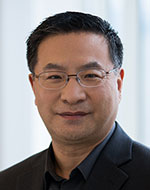 Bio: Dr. Geng Wu is an Intel Fellow, General Manager for Intel’s Next Generation and Standards organization. He leads Intel’s 5G and 6G technology development, global standardization of wireless access and network interfaces, and research collaborations with industry and academic partners. He has had over 30 years of research and development experience in the wireless industry, and has contributed extensively to global 2G CDMA, 3G 1xRTT, UMTS, HSPA and 4G WiMAX, LTE, and 5G NR radio interface and network architecture design and development. He is currently the head of Intel’s delegation to 3GPP, and serves as a director of the board at IOWN Global Forum, MFA (The Alliance for Private Networks), and is an executive officer at the Automotive Edge Computing Consortium (AECC).
Bio: Dr. Geng Wu is an Intel Fellow, General Manager for Intel’s Next Generation and Standards organization. He leads Intel’s 5G and 6G technology development, global standardization of wireless access and network interfaces, and research collaborations with industry and academic partners. He has had over 30 years of research and development experience in the wireless industry, and has contributed extensively to global 2G CDMA, 3G 1xRTT, UMTS, HSPA and 4G WiMAX, LTE, and 5G NR radio interface and network architecture design and development. He is currently the head of Intel’s delegation to 3GPP, and serves as a director of the board at IOWN Global Forum, MFA (The Alliance for Private Networks), and is an executive officer at the Automotive Edge Computing Consortium (AECC).
He joined Intel in 2009, and contributed to Intel’s cloud-RAN and machine-to-machine technology development before taking on next generation technology and standardization responsibility, with special focus on 4G and 5G cellular access and networking as well as Wi-Fi connectivity standards and technologies. Most recently, he led Intel’s 6G air interface and network standards development, working with internal and external partners on the next generation cloud-native and AI-native computing and communication technologies and infrastructure platforms. Prior to Intel, he served as director of wireless architecture and standards at Nortel Networks, responsible for system performance, standards research and technology development in 3GPP2, 3GPP, IEEE and WiMAX.
Dr. Wu received his B.Sc. degree in electrical engineering from Tianjin University, Tianjin, China, and his Ph.D. degree in telecommunications from Université Laval, Québec, Canada. His current research interests include 6G distributed cloud and communications system, system architecture and platforms for artificial intelligence, radio access and core network, and fully programmable optical transport network technologies. He holds more than 50 issued US patents with many patents pending. He has numerous research publications in the field of mobile wireless communications and networking.
Keynote 4: Mérouane Debbah, Technology Innovation Institute, UAE
Date: Wednesday, 31 May
Time: 9:00-11:00
Location: Auditorium
Title: Large Language Models for Intelligent Wireless Communication Systems
Abstract: Large Language Models (LLMs) have shown remarkable success in natural language processing (NLP) tasks, such as language translation, text summarization, and sentiment analysis. They can also help in identifying network faults, improving network security, and facilitating spectrum sharing. LLM-based solutions can be trained on large-scale datasets to capture the heterogeneity and diversity of wireless networks. These models can be deployed on resource-limited devices, such as smartphones, to provide intelligent wireless services. Based on our recent announcement of FALCON LLM in march 2023 (UAE-owned AI language model outperforms ChatGPT - ITP.net), which is a foundational large language model (LLM) with 40 billion parameters, outperforming GPT 3, developed by the AI and Digital Science Research Center at TII, we will discuss our recent progress on LLM features and the potential of FALCON LLM in enabling intelligent wireless communication systems.
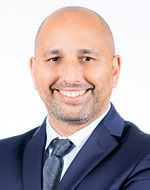 Bio: Mérouane Debbah is Chief Researcher at the Technology Innovation Institute in Abu Dhabi. He is a Professor at Centralesupelec (France) and an Adjunct Professor with the Department of Machine Learning at the Mohamed Bin Zayed University of Artificial Intelligence in Abu Dhabi. He received the M.Sc. and Ph.D. degrees from the Ecole Normale Supérieure Paris-Saclay, France. He was with Motorola Labs, Saclay, France, from 1999 to 2002, and then with the Vienna Research Center for Telecommunications, Vienna, Austria, until 2003. From 2003 to 2007, he was an Assistant Professor with the Mobile Communications Department, Institut Eurecom, Sophia Antipolis, France. In 2007, he was appointed Full Professor at CentraleSupelec, Gif-sur-Yvette, France. From 2007 to 2014, he was the Director of the Alcatel-Lucent Chair on Flexible Radio. From 2014 to 2021, he was Vice-President of the Huawei France Research Center. He was jointly the director of the Mathematical and Algorithmic Sciences Lab as well as the director of the Lagrange Mathematical and Computing Research Center. Since 2021, he is leading the AI & Digital Science Research centers at the Technology Innovation Institute. He has managed 8 EU projects and more than 24 national and international projects. His research interests lie in fundamental mathematics, algorithms, statistics, information, and communication sciences research. He holds more than 40 patents. He is an IEEE Fellow, a WWRF Fellow, a Eurasip Fellow, an AAIA Fellow, an Institut Louis Bachelier Fellow and a Membre émérite SEE. He was a recipient of the ERC Grant MORE (Advanced Mathematical Tools for Complex Network Engineering) from 2012 to 2017. He was a recipient of the Mario Boella Award in 2005, the IEEE Glavieux Prize Award in 2011, the Qualcomm Innovation Prize Award in 2012, the 2019 IEEE Radio Communications Committee Technical Recognition Award and the 2020 SEE Blondel Medal. He received more than 25 best paper awards, among which the 2007 IEEE GLOBECOM Best Paper Award, the Wi-Opt 2009 Best Paper Award, the 2010 Newcom++ Best Paper Award, the WUN CogCom Best Paper 2012 and 2013 Award, the 2014 WCNC Best Paper Award, the 2015 ICC Best Paper Award, the 2015 IEEE Communications Society Leonard G. Abraham Prize, the 2015 IEEE Communications Society Fred W. Ellersick Prize, the 2016 IEEE Communications Society Best Tutorial Paper Award, the 2016 European Wireless Best Paper Award, the 2017 Eurasip Best Paper Award, the 2018 IEEE Marconi Prize Paper Award, the 2019 IEEE Communications Society Young Author Best Paper Award, the 2021 Eurasip Best Paper Award, the 2021 IEEE Marconi Prize Paper Award, the 2022 IEEE Communications Society Outstanding Paper Award, the 2022 ICC Best paper Award, the 2022 IEEE GLOBECOM Best Paper Award, 2022 IEEE TAOS TC Best GCSN Paper Award, the 2022 IEEE International Conference on Metaverse Best Paper Award as well as the Valuetools 2007, Valuetools 2008, CrownCom 2009, Valuetools 2012, SAM 2014, and 2017 IEEE Sweden VT-COM-IT Joint Chapter best student paper awards. He is an Associate Editor-in-Chief of the journal Random Matrix: Theory and Applications. He was an Associate Area Editor and Senior Area Editor of the IEEE TRANSACTIONS ON SIGNAL PROCESSING from 2011 to 2013 and from 2013 to 2014, respectively. From 2021 to 2022, he served as an IEEE Signal Processing Society Distinguished Industry Speaker.
Bio: Mérouane Debbah is Chief Researcher at the Technology Innovation Institute in Abu Dhabi. He is a Professor at Centralesupelec (France) and an Adjunct Professor with the Department of Machine Learning at the Mohamed Bin Zayed University of Artificial Intelligence in Abu Dhabi. He received the M.Sc. and Ph.D. degrees from the Ecole Normale Supérieure Paris-Saclay, France. He was with Motorola Labs, Saclay, France, from 1999 to 2002, and then with the Vienna Research Center for Telecommunications, Vienna, Austria, until 2003. From 2003 to 2007, he was an Assistant Professor with the Mobile Communications Department, Institut Eurecom, Sophia Antipolis, France. In 2007, he was appointed Full Professor at CentraleSupelec, Gif-sur-Yvette, France. From 2007 to 2014, he was the Director of the Alcatel-Lucent Chair on Flexible Radio. From 2014 to 2021, he was Vice-President of the Huawei France Research Center. He was jointly the director of the Mathematical and Algorithmic Sciences Lab as well as the director of the Lagrange Mathematical and Computing Research Center. Since 2021, he is leading the AI & Digital Science Research centers at the Technology Innovation Institute. He has managed 8 EU projects and more than 24 national and international projects. His research interests lie in fundamental mathematics, algorithms, statistics, information, and communication sciences research. He holds more than 40 patents. He is an IEEE Fellow, a WWRF Fellow, a Eurasip Fellow, an AAIA Fellow, an Institut Louis Bachelier Fellow and a Membre émérite SEE. He was a recipient of the ERC Grant MORE (Advanced Mathematical Tools for Complex Network Engineering) from 2012 to 2017. He was a recipient of the Mario Boella Award in 2005, the IEEE Glavieux Prize Award in 2011, the Qualcomm Innovation Prize Award in 2012, the 2019 IEEE Radio Communications Committee Technical Recognition Award and the 2020 SEE Blondel Medal. He received more than 25 best paper awards, among which the 2007 IEEE GLOBECOM Best Paper Award, the Wi-Opt 2009 Best Paper Award, the 2010 Newcom++ Best Paper Award, the WUN CogCom Best Paper 2012 and 2013 Award, the 2014 WCNC Best Paper Award, the 2015 ICC Best Paper Award, the 2015 IEEE Communications Society Leonard G. Abraham Prize, the 2015 IEEE Communications Society Fred W. Ellersick Prize, the 2016 IEEE Communications Society Best Tutorial Paper Award, the 2016 European Wireless Best Paper Award, the 2017 Eurasip Best Paper Award, the 2018 IEEE Marconi Prize Paper Award, the 2019 IEEE Communications Society Young Author Best Paper Award, the 2021 Eurasip Best Paper Award, the 2021 IEEE Marconi Prize Paper Award, the 2022 IEEE Communications Society Outstanding Paper Award, the 2022 ICC Best paper Award, the 2022 IEEE GLOBECOM Best Paper Award, 2022 IEEE TAOS TC Best GCSN Paper Award, the 2022 IEEE International Conference on Metaverse Best Paper Award as well as the Valuetools 2007, Valuetools 2008, CrownCom 2009, Valuetools 2012, SAM 2014, and 2017 IEEE Sweden VT-COM-IT Joint Chapter best student paper awards. He is an Associate Editor-in-Chief of the journal Random Matrix: Theory and Applications. He was an Associate Area Editor and Senior Area Editor of the IEEE TRANSACTIONS ON SIGNAL PROCESSING from 2011 to 2013 and from 2013 to 2014, respectively. From 2021 to 2022, he served as an IEEE Signal Processing Society Distinguished Industry Speaker.
Keynote 5: Giampaolo Tardioli, Vice President of Communication Solution Group (CSG), Keysight Inc.
Date: Monday, 29 May
Time: 9:00-11:00
Location: Auditorium
Title: Energy Efficiency in Next Generation Communications: You can’t improve what you can’t measure
Abstract: Over the past decade, cellular technology has grown exponentially. This growth has led to a massive increase in cellular infrastructure, as well as a massive increase in power consumption to operate. The increase in power usage is expensive, both financially and environmentally. In 5G, wireless systems have grown more complex and it is difficult to know where energy goes and there are no methods for measuring energy usage built into the standard. 6G is the first generation of wireless technology that is focused on sustainability from the beginning. 6G looks to reduce the overall resource consumption of wireless systems and to enable other industries to be more sustainable. But to reduce resource consumption, it first must be measured. The start of a new generation gives engineers a chance to add power consumption measurements and others to the standards. Having a detailed knowledge of how energy is being used in wireless systems is key to building a greener, more sustainable 6G. This keynote will walk through the economic and technology forces driving the push for higher energy efficiency in 6G, the current work being done in the industry and standards, and the engineering challenges that must be addressed to make 6G the first green G.
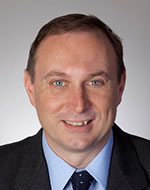 Bio: Dr. Giampaolo Tardioli is the vice president of Keysight’s Communication Solution Group (CSG) which focuses on 6G strategy, wireless operators, and enterprise business strategic growth opportunities. Dr. Tardioli presides over multiple cross-functional teams and orchestrates their efforts as they innovate solutions that address the toughest engineering challenges of today and tomorrow.
Bio: Dr. Giampaolo Tardioli is the vice president of Keysight’s Communication Solution Group (CSG) which focuses on 6G strategy, wireless operators, and enterprise business strategic growth opportunities. Dr. Tardioli presides over multiple cross-functional teams and orchestrates their efforts as they innovate solutions that address the toughest engineering challenges of today and tomorrow.
Dr. Gianpaolo’s career has grown and evolved alongside the organization—from Hewlett Packard to Agilent, and now, Keysight Technologies. During his quarter century tenure with the company, he has held senior management roles and guided both divisions and business units across product planning, R&D, quality, and operations. The wealth of experience Dr. Tardioli has built over that time has earned him recognition as a leading expert in wireless technology within both Keysight and the industry at large.
Dr. Tardioli received his M.Sc in Electrical Engineering from the Universita Politecnica delle Marche in Ancona, Italy. He received his PhD in Computational Electromagnetics from the University of Victoria in British Columbia, Canada.
Keynote 6: Xinhui Wang, Vice President, ZTE Corporation, China
Date: Wednesday, 31 May
Time: 9:00-11:00
Location: Auditorium
Title: From 5G to 6G and beyond: A Continuous Evolution
Abstract: Mobile communication technologies have been changing our lives at a steady pace with a regular cycle of decades. From voice calls through analog signals to immersive services and seamless connections, the communication industry has come a long way. Now, 6G is becoming one of the most trendy and popular keywords while we are still evolving our 5G standards to 5G Advanced for extension of its roll-out covering more and more business sectors including verticals. In the past generations, we have seen how mobile services and applications boosted the innovation, industry eco-system and economy, and gradually re-shaped our human society and everyday lives. When we talk about the future of mobile communications, we must learn from the past and face concurrent challenges. Following the paradigm of mobile communications technology evolution, adopting mobile services in vertical segments, and ensuring sustainable market development will enlighten the evolution path towards 5G-Advanced and 6G. Continuous advancements of emerging wireless technologies will fuel the smooth evolution from 5G to 5G advanced, 6G and beyond.
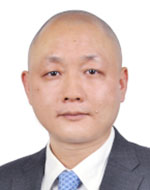 Bio: Xinhui Wang (wangxinhui@zte.com.cn) is currently the General Manager of Standardization and Industrial Relations in charge of technology innovation, standardization, strategy and industrial relations building, Vice President of ZTE Corporation. He received Bachelor and Master Degrees from Northeastern University of China. He joined ZTE working on software development and system design of wireless communication system in 2000. Since 2006, he has been focusing on advanced radio access technology research and standardization with over 20 published papers and 50 granted patents held globally. The team under his leadership works in 100+ international/regional/domestic Standardization Organizations, Industrial Alliances/Fora/Consortia and Open Source Communities of significant prominence. He has been elected Vice Chairman of 3GPP GERAN TSG for three consecutive terms since 2011. He serves as Member of Advisory Committee of IMT-2020(5G) Promotion Group, Member of Advisory Committee of IMT-2030(6G) Promotion Group and CCSA TC5 vice chairman. He has been the Keynote Speaker of IEEE ICC and IEEE WCNC along with Industrial Speaker of China Delegation for 7 continuous Global 5G Summits.
Bio: Xinhui Wang (wangxinhui@zte.com.cn) is currently the General Manager of Standardization and Industrial Relations in charge of technology innovation, standardization, strategy and industrial relations building, Vice President of ZTE Corporation. He received Bachelor and Master Degrees from Northeastern University of China. He joined ZTE working on software development and system design of wireless communication system in 2000. Since 2006, he has been focusing on advanced radio access technology research and standardization with over 20 published papers and 50 granted patents held globally. The team under his leadership works in 100+ international/regional/domestic Standardization Organizations, Industrial Alliances/Fora/Consortia and Open Source Communities of significant prominence. He has been elected Vice Chairman of 3GPP GERAN TSG for three consecutive terms since 2011. He serves as Member of Advisory Committee of IMT-2020(5G) Promotion Group, Member of Advisory Committee of IMT-2030(6G) Promotion Group and CCSA TC5 vice chairman. He has been the Keynote Speaker of IEEE ICC and IEEE WCNC along with Industrial Speaker of China Delegation for 7 continuous Global 5G Summits.
Keynote 7: Lorenzo Casaccia, Qualcomm, Spain
Date: Wednesday, 31 May
Time: 9:00-11:00
Location: Auditorium
Title: Leading the 5G Advanced technology evolution on the way to 6G
Abstract: Today, we are driving the continued evolution of 5G Advanced, which is expected to bring enhanced end-to-end 5G system capabilities enabling new levels of performance and efficiency through the rest of this decade.
At the same time, the early vision for 6G is starting to emerge.
The next-generation mobile platform is targeted to bring a large technology leap for 2030 and beyond.
6G will be more than a new radio, it is envisioned to be an innovation platform of technologies, including AI, sensing, security, green networks/devices, and more, which will enable sustained expansion of the Connected Intelligent Edge.
At Qualcomm, we are driving longer-term research to lead the 5G Advanced evolution and establish the technical foundation for 6G.
Join this session to learn about the new technologies underpinning the ongoing 5G Advanced evolution, see the expected 5G Advanced and 6G timelines, market drivers, and potential design requirements, as well as get a glimpse of our longer-term research vectors that are essential for 5G Advanced and 6G.
 Bio: Lorenzo has been at the forefront of wireless technology and innovation for over 20 years.
Bio: Lorenzo has been at the forefront of wireless technology and innovation for over 20 years.
He joined Qualcomm in 2000 as an intern and has been with the company since then, covering a variety of roles related to wireless communication, including research and system design, standardization, regulatory, product, and IP licensing.
He has been leading Qualcomm’s 4G/5G standards team for a decade, including the creation of the 5G standards and its evolution.
He is currently leading 5G/6G IP portfolio management, data analysis, messaging & advocacy for Qualcomm's licensing business unit (QTL), and leading Qualcomm 6G ecosystem, standards & geopolitics initiatives for the Qualcomm standards department.
Lorenzo holds college degrees in Electrical Engineering from the Turin Polytechnic, in Telecommunication from the Eurecom Institute, France, and in Philosophy and Philosophy of Knowledge from the Rome University.
He is the author of over 50 US patents, and he has been on the Board of Advisors of the startup accelerator Luiss Enlabs in Italy.
Keynote 8: Wen Tong, CTO, Wireless Network, Huawei Technologies Co., Ltd.
Date: Monday, 29 May
Time: 9:00-11:00
Location: Auditorium
Title: The Effectiveness Communications – a m2mGPT
Abstract: With the rise of ChatGPT type of machine learning technology, it opens the door for post Shannon communications, namely, the effectiveness communications. The purpose of communications has been generalized into transmission of the intend-intelligent, rather than information bits in the form of the text or sensory data. The goal of the effectiveness communications is to transmit the intend generated from machine learning such that, at the receive-end, to generate the desired generative intelligence and associated actions to achieve the goal of communications. In this talk, we resent a framework of machine-to-machine communications based on the generated pre-trained model, for example in the usage scenario of cloud-driven robots, we also present a new distributed wireless network computing architecture for 6G to support the “data-driven” AI or even AGI services and applications in 2030-2050 time-frame.
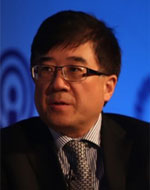 Bio: Dr. Wen Tong is the CTO, Huawei Wireless. He is the head of Huawei wireless research. In 2011, Dr. Tong was appointed the Head of Communications Technologies Labs of Huawei, currently, he is the Huawei 5G chief scientist and led Huawei’s 10-year-long 5G wireless technologies research and development.
Bio: Dr. Wen Tong is the CTO, Huawei Wireless. He is the head of Huawei wireless research. In 2011, Dr. Tong was appointed the Head of Communications Technologies Labs of Huawei, currently, he is the Huawei 5G chief scientist and led Huawei’s 10-year-long 5G wireless technologies research and development.
Prior to joining Huawei in 2009, Dr. Tong was the Nortel Fellow and head of the Network Technology Labs at Nortel. He joined the Wireless Technology Labs at Bell Northern Research in 1995 in Canada.
Dr. Tong is the industry recognized leader in invention of advanced wireless technologies, Dr. Tong was elected as a Huawei Fellow and an IEEE Fellow. He was the recipient of IEEE Communications Society Industry Innovation Award in 2014, and IEEE Communications Society Distinguished Industry Leader Award for “pioneering technical contributions and leadership in the mobile communications industry and innovation in 5G mobile communications technology” in 2018. He is also the recipient of R.A. Fessenden Medal. For the past three decades, he had pioneered fundamental technologies from 1G to 5G wireless with more than 530 awarded US patents.
Dr. Tong is a Fellow of Canadian Academy of Engineering, and he serves as Board of Director of Wi-Fi Alliance.
Keynote 9: Radia Perlman, 2023 IEEE Eric E. Sumner Award Recipient
Date: Wednesday, 31 May
Time: 13:00-13:30
Location: Auditorium
Title: Beyond the Standards: Things We Should Think About, But Don’t
Abstract: There is much confusion in the field of network protocols. Nobody would have designed what we have deployed today. There is no way to understand today’s network protocols without knowing some of the history of how we got here. For example, given that Ethernet is no longer a shared (CSMA/CD) link, but instead, point-to-point links connected with spanning tree bridges, why can’t we simply remove all the bridges and connect all the links in the Internet with IP routers? We talk about CLNP, a 20-byte alternative to IP that almost got adopted in 1992, that would have eliminated the need for bridges and the Ethernet header. We also talk about how, given that the Internet was living with IPv4, the world invented DHCP and NAT. These protocols would work just as well with CLNP as they do with IP, but may not have been invented because the immediate needs for them would not have been obvious with CLNP. These have important advantages beyond what they were invented for. We also talk about Internet authentication. Isn’t that a solved problem? We have certificate standards, and protocols such as TLS. This talk discusses some important gaps between theory and reality in Internet authentication.
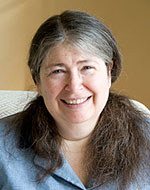 Bio: Radia Perlman has made foundational contributions to computer networking, with the end-to-end delivery of today’s internet traffic relying directly on her innovations. The specific protocol Perlman designed, IS-IS, is still widely deployed and its concepts have been adopted by other link-state routing protocols, such as OSPF. She also invented the spanning-tree algorithm, which transformed Ethernet from a technology that supported a few hundred nodes in a single building to one that could support large networks. Her spanning-tree protocol design now runs in nearly every Ethernet switch on the market and has done so for decades. Additionally, Perlman has made major contributions to the field of network security, including distributed systems robust despite malicious components.
Bio: Radia Perlman has made foundational contributions to computer networking, with the end-to-end delivery of today’s internet traffic relying directly on her innovations. The specific protocol Perlman designed, IS-IS, is still widely deployed and its concepts have been adopted by other link-state routing protocols, such as OSPF. She also invented the spanning-tree algorithm, which transformed Ethernet from a technology that supported a few hundred nodes in a single building to one that could support large networks. Her spanning-tree protocol design now runs in nearly every Ethernet switch on the market and has done so for decades. Additionally, Perlman has made major contributions to the field of network security, including distributed systems robust despite malicious components.
An IEEE Fellow, Perlman is a Fellow, Dell Technologies, Redmond, Washington, USA.







